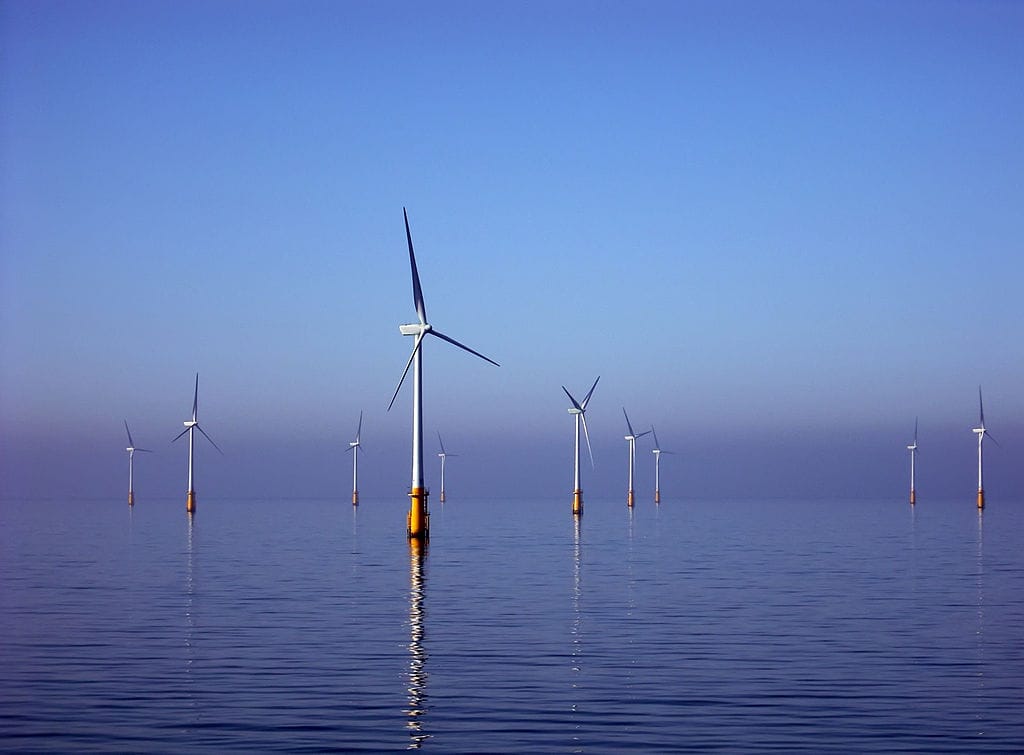Offshore wind workforce a weak link in plan to build out renewables
A national push toward offshore wind energy could create thousands of well-paying domestic jobs in Louisiana and elsewhere.

Published in the Louisiana Illuminator and the Lens
A national push toward offshore wind energy could create thousands of well-paying domestic jobs in Louisiana and elsewhere, according to clean energy advocates and President Joe Biden, who wants to establish 30 gigawatts of offshore wind energy by 2030.
But it’s unlikely there will be enough trained and certified workers to fill those positions, and that could harm the development of the offshore wind industry, according to Jeremy Stefek, workforce and economic development researcher with the National Renewable Energy Laboratory who recently assessed the offshore wind workforce.
His research found that, to meet the president’s goals, the offshore wind industry needs more than 44,000 workers in offshore wind energy by 2030 and nearly 33,000 additional workers in the communities to support offshore wind energy activity.
Currently there are fewer than 1,000 workers in the country’s offshore wind sector, according to estimates by the U.S. Department of Energy.
In response to the expected shortage, the University of New Orleans announced its creation of the Louisiana Wind Energy Hub last year, and this fall will award five scholarships for the hub’s inaugural curriculum, which focuses on things like offshore wind structure design, project management and ocean engineering.
“Even before those reports came out we’ve been having discussions with some of our industry partners and they were pointing us to this huge gap in workforce,” said Shafin Khan, vice president of external affairs and innovation for UNO.
Nearby in Chalmette, Nunez Community College is awaiting final approval from the state’s Board of Regents for courses geared toward training certified wind turbine technicians.
What’s happening at both schools is an example of what needs to be happening all over the nation, Stefak said. The Department of Energy recently requested information about offshore workforce development and plans to establish offshore wind workforce hubs around the United States to assess and anticipate future workforce needs to ensure supply meets demand, officials said.
“If we’re not able to develop this workforce to meet that need, or people don’t develop those (wind turbine) manufacturing plants because they feel that there isn’t enough workforce in the United States to meet that need, I think it would be detrimental to the industry,” Stefek said.
“I think one of the challenges is just competition between industries,” Stefek added, referring to the statewide development of liquefied natural gas terminals, hydrogen manufacturers and carbon capture and sequestration projects.
The NREL report notes there needs to be greater awareness and outreach within coastal communities around offshore wind’s benefits and potential as well as education and engagement in all grades about renewable energy, and apprenticeship programs.
With Louisiana’s background in offshore oil and gas, Louisiana Gov. John Bel Edwards and others say the state is poised for success when it comes to offshore wind energy.
“Offshore wind provides the opportunity for us to build off our existing skill set and experiences in the offshore oil and gas industry,” Edwards said in a offshore wind conference earlier this year.
UNO’s Wind Scholars Program is a humble start toward creating additional workers for the sector, Kahn said. The university’s Wind Energy Hub will offer offshore wind certifications, grants to fund research around wind energy and business incubation services for the wind energy field in addition to its four-year degree programs in offshore wind.
UNO launched its Wind Energy Hub in partnership with its Research and Technology Foundation. Nunez Community College joined forces with Norway-based renewable energy company Energy Innovations to design its wind energy-focused training courses.
Jacqueline Richard, Nunez’s director of coastal studies and GIS technology, said its wind energy curricula are modeled after the community college’s welding program, which offers prospective students eight-week long semesters they can streamline to earn certifications quicker in wind turbine mechanics and/or a maintenance technology program. They’ll also offer a certification program that integrates into UNO’s Wind Engineering program, she said.
“We’re in the beginning stages of watching a whole new sector come online,” Richard said. “It’s hard to maybe figure out what to do to preemptively get there.”
Floodlight depends on a community of readers like you who are committed to supporting nonprofit investigative journalism. Donate to see more stories like this one.


